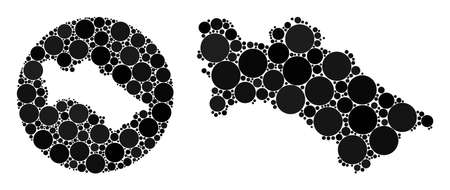Understanding Water Parameters in Aquariums
If youre new to fishkeeping or even a seasoned aquarist, one of the most critical things you’ll learn is how essential water parameters are for a healthy aquarium. Monitoring and maintaining the right balance of factors like pH, ammonia, nitrites, and nitrates is not just about keeping the water clear—its about ensuring the well-being and longevity of your aquatic pets. Each parameter plays a unique role in the ecosystem of your tank, and any imbalance can have immediate and long-term impacts on both fish health and overall tank stability. Regularly testing your water helps catch potential issues before they turn into big problems, saving you stress and your fish from unnecessary harm. By understanding what each parameter means and how they interact, youll be better equipped to create a thriving environment that mirrors the natural habitats of your fish, making your aquarium not just a display piece but a living, breathing system.
2. The Significance of pH Levels
The pH level of your aquarium water is more than just a number—its a key factor that directly affects the health and wellbeing of your aquatic pets. Each species has its own preferred pH range, and even slight deviations can lead to stress or illness. For example, most freshwater tropical fish thrive in slightly acidic to neutral water (pH 6.5–7.5), while African cichlids prefer more alkaline conditions (pH 7.8–8.6). If you keep saltwater species, youll find they do best in a stable, alkaline environment (pH 8.0–8.4). Keeping pH stable within these ranges is crucial for optimal fish health.
| Species Type | Ideal pH Range |
|---|---|
| Freshwater Tropical Fish | 6.5 – 7.5 |
| African Cichlids | 7.8 – 8.6 |
| Saltwater Fish | 8.0 – 8.4 |
| Goldfish | 7.0 – 7.5 |
Recognizing Signs of pH Imbalance
If the pH in your tank drifts outside the ideal range, your fish may show clear signs of distress: erratic swimming, rapid gill movement, faded colors, or even lethargy. Plants may also start to wilt or show signs of decay if the water becomes too acidic or alkaline for their needs.
How to Maintain Stable pH Levels
The key to maintaining a steady pH is consistency and routine testing with a reliable kit. Here are some practical steps:
- Test regularly: Check your tank’s pH at least once a week.
- Avoid sudden changes: When making water changes, match the new water’s pH as closely as possible to your tank’s current level.
- Condition tap water: Use water conditioners to neutralize chemicals that could shift pH.
- Add natural buffers: Crushed coral or limestone can help stabilize low pH; driftwood may lower high pH over time.
- Limit chemical additives: Only use commercial pH adjusters when absolutely necessary, as they can cause rapid swings harmful to aquatic life.
Remember: A stable, appropriate pH isn’t just about numbers—it’s about creating a healthy, stress-free environment where your aquatic species can thrive.

3. Ammonia: The Silent Threat
When it comes to aquarium water quality, ammonia is one of the most dangerous substances you’ll encounter—and often, hobbyists don’t even realize there’s a problem until their fish are showing signs of distress. Ammonia is produced naturally in your tank whenever fish excrete waste, leftover food decomposes, or plants and other organic matter break down. In a healthy, cycled aquarium, beneficial bacteria convert this toxic ammonia into less harmful substances through a process called the nitrogen cycle. However, if your tank is new, overstocked, or lacks proper filtration, ammonia can build up quickly and silently threaten the health of your aquatic pets.
Ammonia poisoning isn’t always obvious at first. Early symptoms in fish include gasping at the surface, clamped fins, lethargy, loss of appetite, or red streaks on fins and gills. At high levels, ammonia burns fish gills and skin tissues, eventually leading to death if not addressed promptly. That’s why regular testing using an aquarium test kit is so important—it’s your best defense against this invisible killer. Ideally, you want to keep ammonia levels at zero parts per million (ppm) at all times.
To prevent ammonia spikes, follow some key best practices: avoid overfeeding (remove uneaten food after a few minutes), perform routine partial water changes (about 20–30% weekly), and make sure your filter is properly sized and maintained for your tank’s bioload. Consider adding live plants—they absorb ammonia as part of their natural growth process. Finally, introduce new fish gradually rather than all at once to allow the beneficial bacteria colony to adjust and expand as needed. By keeping a close eye on ammonia and staying proactive with maintenance, you’ll create a safer environment for your aquatic friends and support long-term aquarium success.
4. Nitrites: The Middle Step of the Nitrogen Cycle
When it comes to maintaining a healthy aquarium, understanding nitrites is essential. Nitrites (NO2–) represent the middle step in the nitrogen cycle, forming after ammonia is broken down by beneficial bacteria (specifically, Nitrosomonas species). While this transformation is a natural and necessary process, nitrites themselves are highly toxic to fish and invertebrates, even at low concentrations. Recognizing how nitrites form and how to support your tank’s biological filtration can make all the difference for your aquatic pets.
How Nitrites Form in Aquarium Water
The nitrogen cycle is a continuous process that breaks down waste products in your tank. Here’s a quick look at how nitrites fit into the big picture:
| Stage | Compound | Bacteria Responsible |
|---|---|---|
| Step 1 | Ammonia (NH3/NH4+) | Nitrosomonas |
| Step 2 | Nitrite (NO2–) | Nitrospira/Nitrobacter |
| Step 3 | Nitrate (NO3–) | – |
Nitrites build up when beneficial bacteria that convert ammonia haven’t yet established strong colonies—this often happens in new tanks or after cleaning with harsh chemicals. If left unchecked, nitrite levels can quickly become dangerous.
The Toxicity of Nitrites to Aquarium Life
Nitrites interfere with the ability of fish blood to carry oxygen, leading to a condition commonly known as “brown blood disease” or methemoglobinemia. Symptoms can include gasping at the surface, sluggishness, and sudden deaths. In most community aquariums, any detectable level of nitrite above 0.25 ppm (parts per million) is cause for concern and immediate action.
Nitrite Toxicity Reference Table
| Nitrite Level (ppm) | Status/Action Required |
|---|---|
| 0.0 – 0.25 | Safe/Ideal Range |
| 0.25 – 1.0 | Caution: Monitor closely; partial water change recommended |
| > 1.0 | Danger: Immediate water changes required; add biological filter support; reduce feeding |
Supporting Healthy Biological Filtration
- Add filter media designed for bio-filtration (like ceramic rings or sponges).
- Avoid over-cleaning filter media and gravel—leave some “gunk” for bacteria!
- If you must medicate or disinfect, use products that are safe for beneficial bacteria.
- Cycle new tanks fully before adding fish by using an ammonia source and test kits.
- If nitrite spikes occur, perform partial water changes and consider adding bottled nitrifying bacteria to jumpstart recovery.
Aquarist’s Tip:
If you’re cycling a new tank or recovering from a spike, keep salt on hand—adding small amounts of aquarium salt (not table salt) can help protect fish from nitrite toxicity by blocking its uptake through gills.
Staying alert to your tank’s nitrite levels and understanding their role means you’ll be ready to keep your aquatic environment safe, stable, and thriving throughout every stage of the nitrogen cycle.
5. Nitrates: The End Product and How to Manage Them
As the nitrogen cycle runs its course in your aquarium, nitrates (NO3-) emerge as the final byproduct after beneficial bacteria convert ammonia into nitrites and then into nitrates. While nitrates are far less toxic than ammonia or nitrites, they still play a major role in overall water quality and long-term fish health. Understanding why nitrates matter, what levels are safe, and how to keep them in check is essential for any aquarist.
Why Nitrates Matter in Aquariums
Nitrates are naturally produced in all cycled tanks, and a low concentration is generally tolerated by most freshwater fish. However, consistently high nitrate levels can stress fish, stunt growth, suppress immune systems, and encourage algae blooms. In reef tanks or with sensitive species, even lower nitrate concentrations can be harmful over time.
Safe Nitrate Limits for Aquariums
For most freshwater community tanks, keeping nitrates below 40 ppm (parts per million) is widely recommended. For sensitive fish or planted tanks, aim for under 20 ppm. In saltwater and reef setups, the goal is often below 10 ppm—sometimes as low as 2-5 ppm for demanding corals and invertebrates. Regular water testing with reliable kits will help you stay on top of these numbers.
Common Issues from Excessive Nitrates
If nitrate levels creep up past recommended limits, you might notice sluggish fish behavior, reduced appetite, or increased outbreaks of disease. Algae problems are also common when nitrates run high—the extra nutrients feed unwanted green algae that can quickly take over your tank’s surfaces and decorations.
Effective Strategies to Reduce Nitrates
The best way to manage nitrates is through regular partial water changes—removing old tank water and replacing it with fresh dechlorinated water dilutes nitrate concentrations directly. Avoid overfeeding your fish; uneaten food breaks down into waste that fuels the nitrogen cycle. Adding live plants also helps—they absorb nitrates as nutrients for growth. Finally, check your filter media and clean it regularly to prevent organic buildup that can spike nitrate production. For advanced setups, specialized filters like denitrators or using chemical filtration media designed to remove nitrates can offer extra support.
In summary, while nitrates are less immediately dangerous than ammonia or nitrites, keeping them under control is key for a thriving aquarium environment. Consistent maintenance routines and smart stocking choices will go a long way toward ensuring your aquatic friends stay healthy and happy.
6. Creating a Regular Testing and Maintenance Routine
Maintaining optimal water quality in your aquarium isn’t a one-time task—it’s an ongoing commitment that directly impacts the health of your fish and plants. By establishing a regular testing and maintenance routine focused on pH, ammonia, nitrites, and nitrates, you’ll help create a balanced aquatic environment where life can truly thrive.
Scheduling Water Tests
Consistency is key. Set up a schedule to test your aquarium water at least once a week. For new tanks or those with recent changes—like added fish or altered filtration—consider testing every other day for the first few weeks. Use reminders on your phone or calendar to stay on track; this habit is common among experienced aquarists across the U.S.
Interpreting Your Results
Learning how to interpret your test results is just as important as performing the tests themselves. If pH levels are outside the species-appropriate range, adjust gradually using products designed for aquarium use. Ammonia should always read zero; any detectable amount requires immediate action such as a partial water change and checking for overfeeding or filter issues. Nitrites should also be zero—spikes indicate incomplete cycling or overstocking. Nitrate levels should be kept below 20-40 ppm; higher levels suggest it’s time for more frequent water changes or improved filtration.
Tips for Consistent Maintenance
Establish a routine that pairs water testing with regular tank maintenance tasks: clean filters monthly, vacuum gravel during weekly water changes (removing about 10-20% of the water), and inspect all equipment for proper function. Keep a simple logbook or spreadsheet to track your test results over time; this will help you spot trends before they become problems.
By making these habits part of your regular routine, you’ll foster stable water conditions—and enjoy a healthy, vibrant aquarium that becomes the centerpiece of your home.

